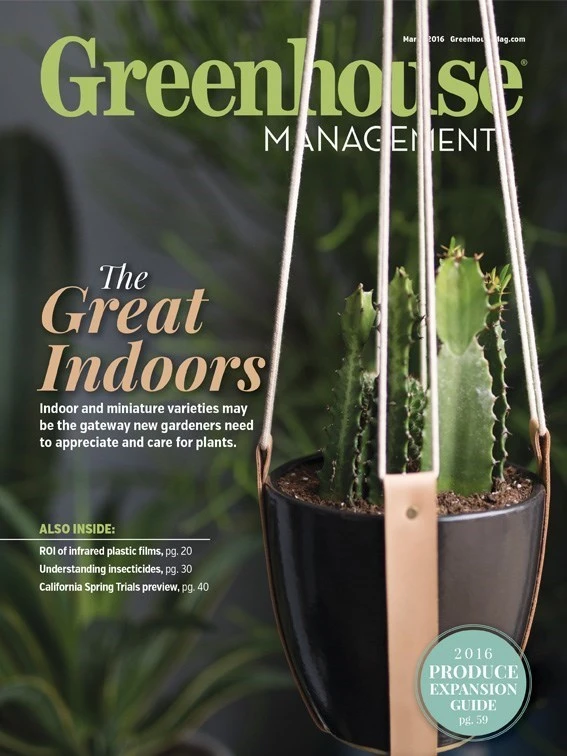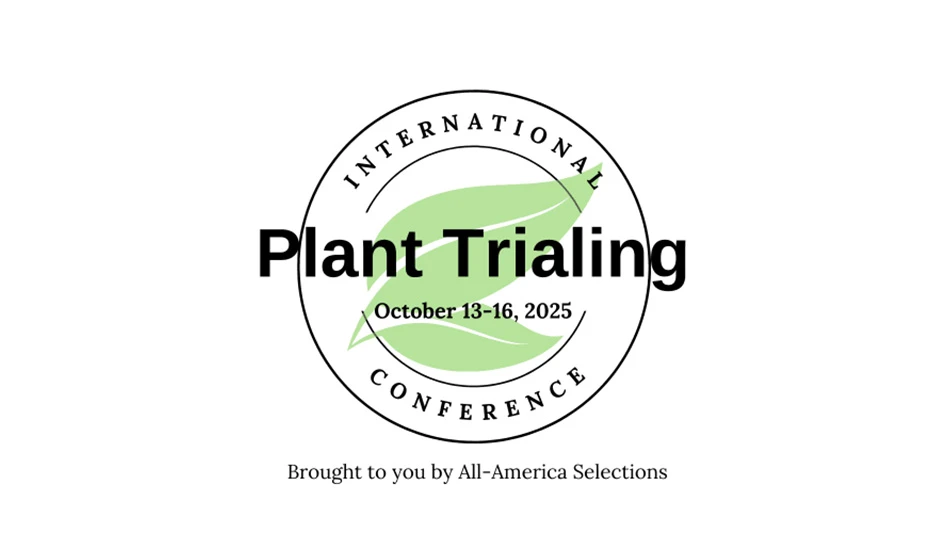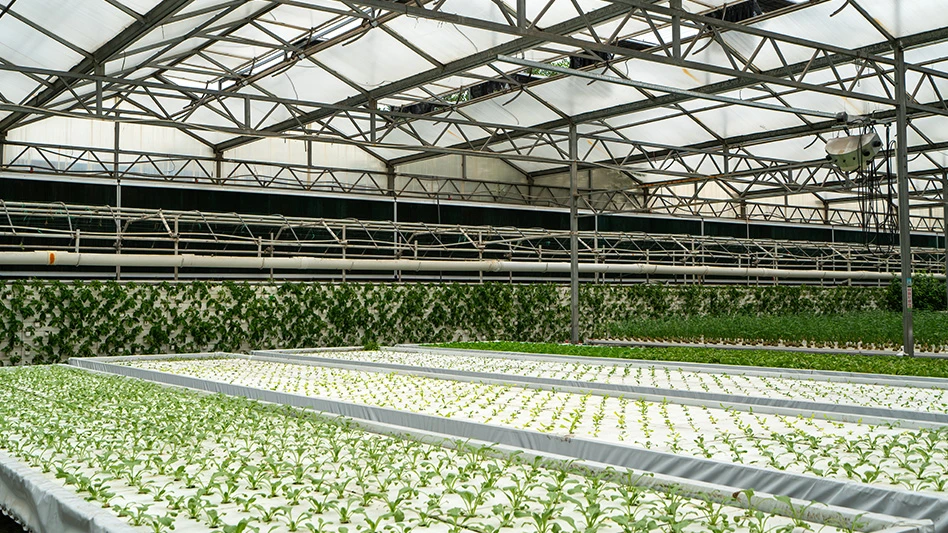
The student becomes the teacher
Two Millennials harness ideas from green industry research to bring their indoor gardening concept-store to life.

In 2014, AmericanHort set out to discover how the horticulture industry could reach the new customer. The initiative — called SHIFT — called out to outside resources to help put the findings together, such as Emily Brown, a student at Columbus College of Art & Design. Little did they know at the time, Brown would become so inspired while working on the project that she’d go onto opening a shop of her own to experiment with attracting new people to plants head-on.
Brown and her business partner and boyfriend, Brian Kellett, opened a garden center of a different kind, called STUMP, in October 2015. Instead of aisles and aisles of plant and plant-related offerings, STUMP — a charcoal-grey brick structure in Columbus, Ohio’s Italian Village — lures in passersby with its crisp, clean, industrial aesthetic and minimalist offerings in a boutique-style display. The kicker? Only indoor varieties grace the shelves — for now.
Brown says STUMP’s limited offering approach was meant to make plant shopping easy, and not overwhelming, for their non-gardening customers by presenting only a few varieties.
“We don’t put everything out at once,” Brown says. “We usually pick through, and I think people like that. It’s almost better to minimize the amount of options.”
“One of the biggest things we realized was the education aspect,” Brown says. “You really have to look at the experience from the customer’s perspective. With STUMP, what we were thinking about were people who aren’t seasoned gardeners. They’re new to owning plants. [So we are] kind of walking them through with baby steps — like the process of choosing a plant…one that’s right for you.”

At STUMP, customers can partake in a consultative method to picking the green that’ll fill their homes. After discussing factors like direction-facing windows and light levels, their choices are narrowed down to those that’ll work best—like philodendron, ZZ plants, string of hearts, indoor trees and mini succulents. Then, the plants are potted at the store and customers are given care cards to help them tend to the plant after they leave.
And to engage with the younger clientele, STUMP partners with local businesses to offer brunches with local chefs and restaurants, and vertical planter workshops with a local landscape architect. Brown also teaches terrarium-building workshops herself. Events range between $60 to $85 per session, and are usually limited to about 20 people.

The couple doesn’t spend much on marketing to bring people in. Brown’s background in design and Kellett’s in photography helped create an Instagram account (@stumpplants) with nearly 3,000 followers at press time.
Many of her walk in customers say they found STUMP on Instagram first, Brown says. And once they buy a product, that following spreads like a spider web.
“Lots of people will tag us in their photos and actually take a picture of the care card and be like, ‘Thank you so much, STUMP, for helping us understand how to take care of our plants,” Brown says. “I think that’s huge because I think the biggest thing [to stress is that] anyone can take care of a plant. You just have to get the right one to fit your lifestyle and your house.”
At GIE Media Horticulture Group's Uncensored conference in September 2015, Mark Foertmeyer, owner of Foertmeyer & Sons Greenhouse Co. in Delaware, Ohio and former AmericanHort chairman of the board said, “Two of them, because they were exposed to the industry, and they saw what it was about, and [realized], ‘Hey this is an industry where we can express our creativity behind, we can see our plant material for what it can do.’ They threw all of their chips on the table and they started a really cool little store.”

“And guess what? It’s nothing like what any of us has ever seen,” he continues. “They took all the research [from SHIFT] and they packed it into the store. They discovered it for themselves. To me, that was one of the largest successes of that program because it made me realize: We’re worried about — we need people to work in the greenhouse — we need growers, we need all of the technical workers, and we do. But we also need fresh blood in this industry, and people who will not look at it this way, but people will see new opportunities and see what we failed to see because we’re so tunnel focused.” — Cassie Neiden
Gardens in a glass

While some indoor-plant enthusiasts are working to establish themselves in a particular community, others are out on the road teaching people how to make indoor plants eye-catching. While the concept of palm-sized glass gardens catches on, Artsy Academy — which launched in spring 2015 — educates adults in the creative arts while producing as little waste as possible and promoting environmental charities.
The group added a terrarium-building course this past summer, allowing students to use hand-blown glass containers to create their own miniature gardens for the indoors.
Artsy Academy’s co-founder Alison Meaney says the class is intended to introduce class participants to gardening basics in a fun, creative atmosphere. Public workshops take place in local restaurants or bars, and students are encouraged to order food and drinks while they work. People can also request private events at their homes, art galleries or other venues. Average class sizes are between 10 and 15 attendees.
Students of the Artsy Academy terrarium class have access to moss, hemp, quartz crystal and other natural materials to build their micro-gardens inside glass containers hand-blown by Artsy Academy’s other co-founder, Tracie Sell. In addition to crafting the glass terrarium containers, Sell also creates glow-in-the-dark mushroom figurines for the class.

Although Sell often works with succulents and other plants in her art, the terrarium classes tend to focus mainly on sustainably-harvested moss as a plant base. Sell says succulents can be difficult to fit into the small openings of the glass containers she uses for the terrarium classes. While succulents are popular for open-container planters, moss is better suited to closed-container terrariums, she adds.
Artsy Academy and its terrarium class now has a presence in five U.S. cities: Asheville, N.C.; Chicago, Ill.; Pittsburgh, Penn.; Orlando, Fla. and Cleveland, Ohio.
“We give (customers) descriptions, tips and pointers and what kind of stress signs to look for in the moss, how to remedy them, how to water them and what kind of light they like,” Sell says. “I think people leave feeling like they’ve really learned something and they’re leaving with a new attachment to having plants in the home. That’s our goal.”— Conner Howard
THINK BIG, plant small

One grower shows that terrarium-building and miniature plants are not a brand new idea. Like many kids in the 1970s, Mark Langan planted a terrarium garden when he was young. He filled a 55-gallon aquarium with 2-inch foliage, creating a miniature world where his dinosaurs could play. But the plants soon outgrew the small space and needed bigger homes. Tiny bella palm seedlings grew 8 feet tall; ponytail palm and split leaf philodendron reached 15 feet. Many people — and plants — outgrew that terrarium trend, until a new era of mini gardening came into vogue this millennium.
Langan, who owns Mulberry Creek Herb Farm, a retail greenhouse and wholesale growing operation in Huron, Ohio, with his wife, Karen, got his first fairy gardening plant request about 15 years ago. As the popularity of fairy gardening grew, so did Langan’s frustration with the trend, as he kept seeing cute, but culturally incompatible plants plunked in a pot together.
“As an industry, we don’t put shade-loving begonias and [sun-loving] calibrachoa together in one hanging basket; that’s not horticulturally wise,” Langan says. “Yet somehow we’re allowing our customers to make ill-fated selections for fairy gardening. I got really frustrated because, one, they were mixing and matching plants that were culturally incompatible; and secondly, they weren’t miniature, so they quickly outsized the accessories.”
Langan began cultivating a line of easily pruned dwarf plants, launching Mulberry Miniatures (originally called Faery Plant Kingdom) three years ago. He now has a collection of 130 varieties of miniature plants.
As more small-scale growers emerge, the plant industry is catching up with the mini gardening trend, which had been driven largely by accessories. Breeders are actively producing varieties specifically for mini gardens.
How mini plants are made
Many miniature plants emerge as sports, or naturally occurring genetic mutations of larger plants. Instead of disregarding those “oddball curiosities,” as Langan calls them, horticulturists are collecting, propagating and patenting them.
Growers are actively producing small varieties to meet increasing demand, cross-breeding plants like African violets and hostas into smaller sizes. New varieties coming to Pixie Plants through tissue culture include Mini Alocasia Fairy, Mini Alocasia Polly, and a mini oak leaf ficus.

Langan mentions new varieties from Terra Nova Nurseries, including a series of fairy-sized Heucheras, which pack traditional color into 2-inch pots. Using Hana Bay Floral’s orange Nertera, Langan created a mini pumpkin patch at Halloween — which became so popular, he added it to the Mulberry Miniatures collection.
Rather than producing new varieties through tissue culture, Howard finds “throwback” varieties that “get lost or drop through the cracks because they don’t perform well with tissue culture.” Then Batson’s Foliage applies growth regulators to manipulate dwarf sizes, reintroducing old pilea, fittonia and begonias to a new generation of mini gardeners.
Langan says he doesn’t use any growth regulators on his plants. He’s heard complaints from customers who get frustrated when a once-cute plant like hypoestes “outgrows the growth regulator and then goes, ‘poof,’ and explodes out of the container.”
Can it grow?
Growers hear a common question about mini varieties: “Do these plants grow or stay this small?”
Unlike plants that outgrew ’70s terrariums, modern breeders are developing varieties that stay smaller longer. Plus, shallow containers and closed terrariums retard growth naturally. But all plants eventually grow.
“These are living plants that do grow,” Langan says. “Yes, golden baby tears will spread and cover the pathway, and yes, you need to keep it pruned. That’s the fun of doing this — that manicuring, pinching and shaping. Instead of a chainsaw, a wheelbarrow and a rake, you’re using pinking shears and a spoon.”
Opportunities abound
Small size contributes to the growing mini gardening trend by bringing higher returns per square foot, adding cross-promotional potential and making gardening accessible to small or feeble hands and gardeners constrained to small spaces.
“The best thing about the miniature trend is the opportunity to bring new generations of gardeners into the fold,” says Howard, suggesting fairy garden classes or parties to unite young and old. “The industry was waning, wondering how to reach the next generation, and miniature gardening has done that.”
With popularity exploding across demographics, the trend keeps growing. When Central Florida Ferns began trials of 2-inch plants on half a bench five years ago, “we thought this was just going to be a niche thing, one or two cases a week,” Roberts says. Now, Pixie Plants sell 100 to 150 cases a week in spring, growing 90 varieties across seven benches that hold nearly 40,000 pots each. Similarly, at Batson’s Foliage, Ittie Bitties production has increased at least 25 percent annually, with nearly 70 varieties.

“The 2-inch size is taking over our greenhouse, pushing out larger sizes,” Howard says. “Anything cutesy sells, and new hard goods each season help give the trend longevity.”
Though 2-inch plants can stand alone as impulse buys or small gifts, successful garden centers embrace the entire trend, cross-merchandising plants with seasonal accessories, small pots, and quart-sized packages of bulk soil, gravel, natural fertilizer and sheet moss. Tiny items bring high returns, contributing add-on sales without requiring much shelf space.
“Two years ago, I probably would have told you, ‘This is a fad that’ll quickly run its course,’ but I’ve changed my thoughts,” Roberts says. “I think the small plant market still has a long way to go. It has a lot of potential because you can use 2-inch plants for anything.”
Picture them planted in teacups, given as party favors, or used in miniature indoor living walls, in addition to fairy gardens, terrariums and other miniature worlds. The possibilities are endless.
“This is not a fad,” says Langan, who considers miniature gardening a crucial “gateway” to get children hooked on plants. “It is a growing trend. We can make it a really successful trend if we help customers be successful with small plants.” — Brooke Bates
Editor’s Note:“Gardens in a glass” and “Think big, plant small” are excerpts from the Garden Center magazine’s October 2015 and January 2016 issues, respectively.

Explore the March 2016 Issue
Check out more from this issue and find your next story to read.
Latest from Greenhouse Management
- Hurricane Helene: Florida agricultural production losses top $40M, UF economists estimate
- No shelter!
- Sensaphone releases weatherproof enclosures for WSG30 remote monitoring system, wireless sensors
- Profile Growing Solutions hires regional sales manager
- Cultural controls
- University of Maryland graduate student receives 2024 Carville M. Akehurst Memorial Scholarship
- Applications open for Horticultural Research Institute Leadership Academy Class of 2026
- Meeting the challenge of pest management





